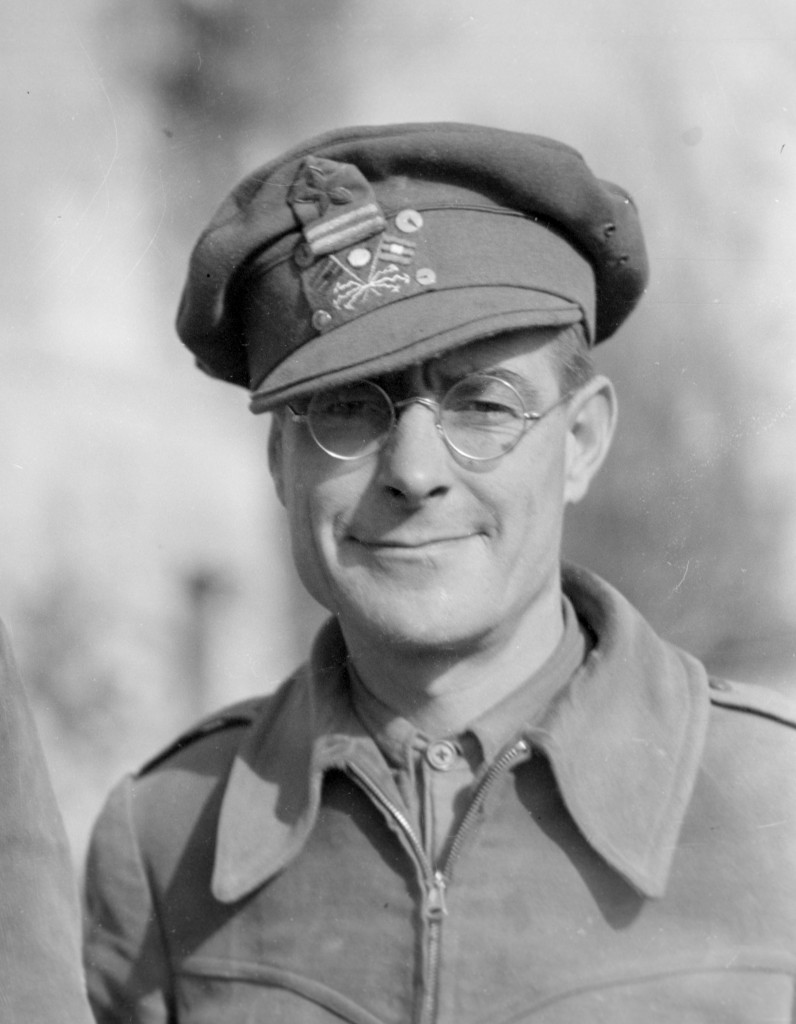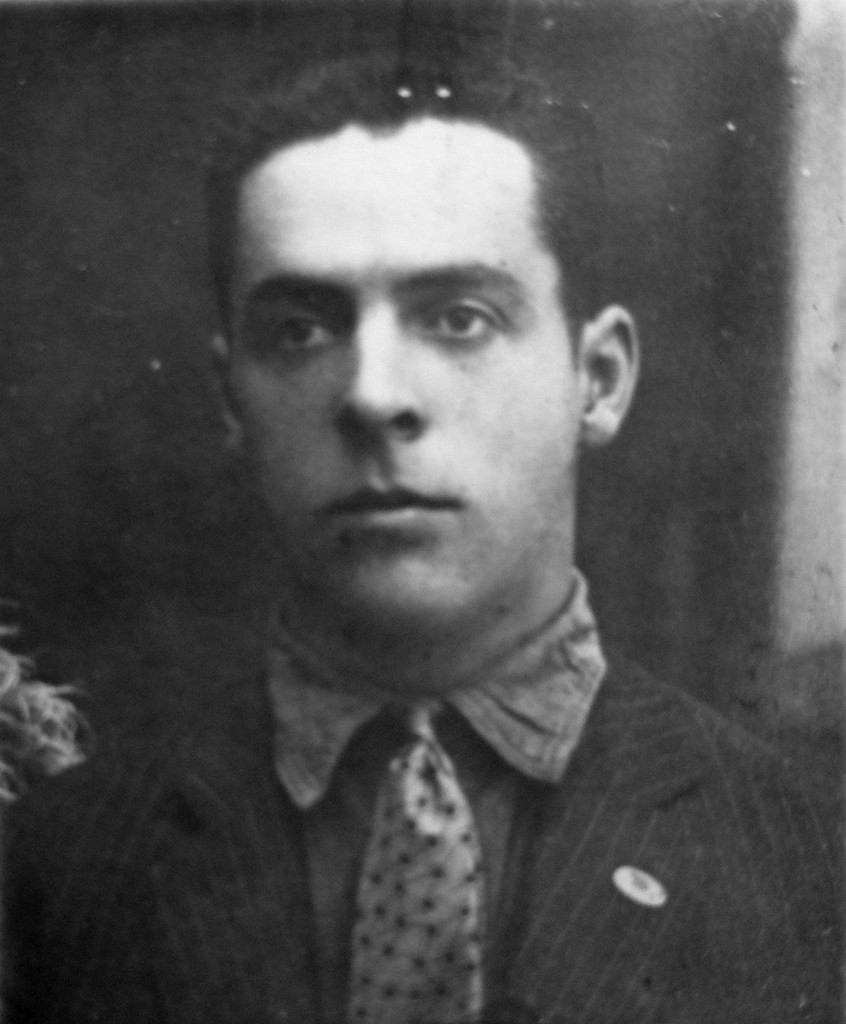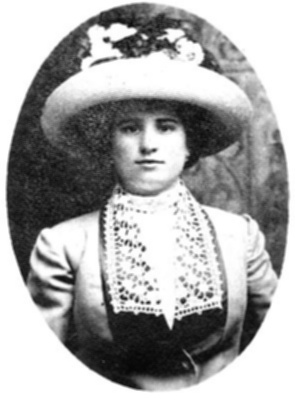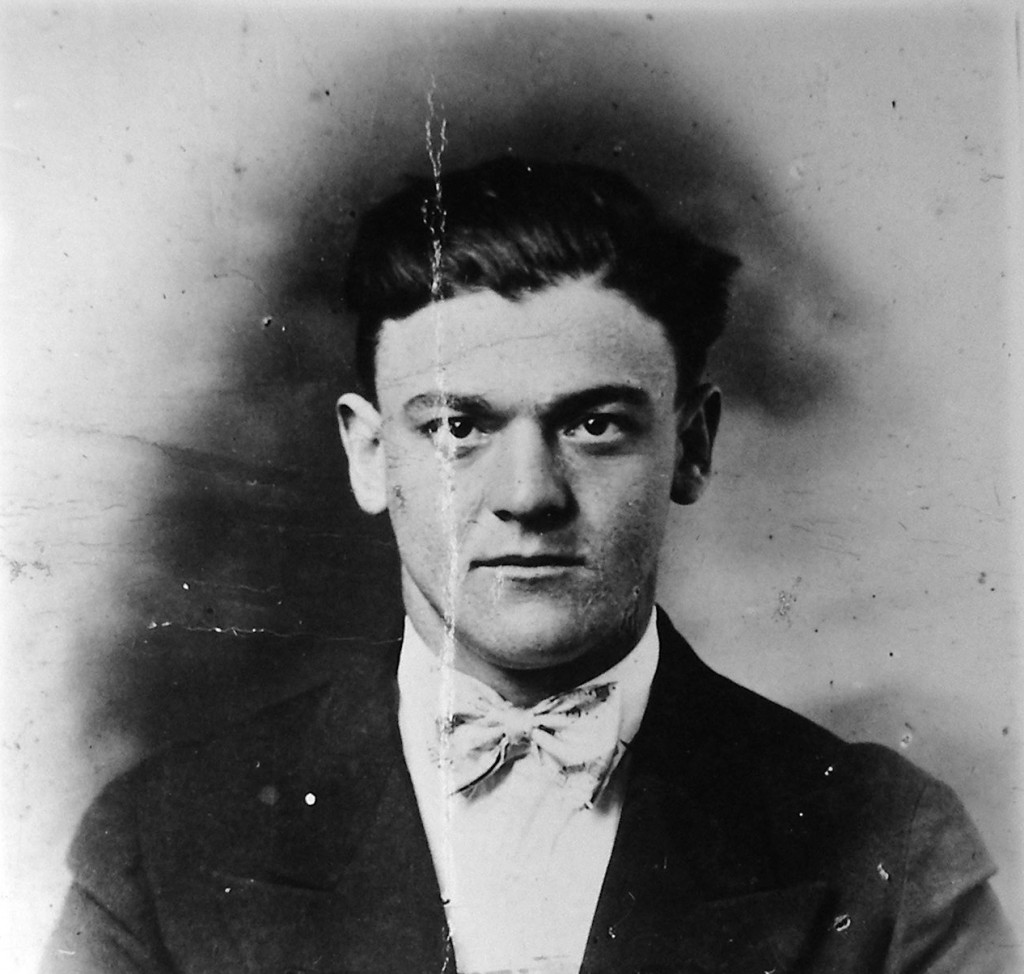Forgotten Fighters: American Anarchist Volunteers in the Spanish Civil War

Patrick Read at Ambite, December 1927. Tamiment Library, NYU, 15th IB Photo Collection, Photo #11_0992.
Among the almost 3,000 foreign anarchists who fought in the Spanish Civil War, more than one hundred came from the United States. Their story has been almost entirely overlooked.
Although much has been written on the Abraham Lincoln Battalion and the International Brigades (IB), one group of volunteer fighters in the Spanish Civil War has been almost entirely overlooked: the approximately 2,000-3,000 foreign anarchists who either joined Spanish militias or IB units. Of these, between 100 and 200 traveled to Spain from the United States, in many cases never to return. Their motives and experiences differed markedly from those of most other volunteers. They highlight the many-sided nature of the Spanish conflict as well as the transnational networks of the pre-World War II anarchist movement.
By the 1930s, anarchism—an anti-authoritarian socialist movement that aimed to abolish both capitalism and the state—was in decline in much of the world, including the United States. In Spain, however, it was reaching its peak; at the outbreak of the civil war there were over a million members enrolled in the anarcho-syndicalist Confederación Nacional del Trabajo (CNT), the country’s largest labor confederation. When the Nationalists launched their attempted coup in July 1936, armed CNT militants led the resistance in Barcelona and other parts of the country. With the government and economy of Spain in chaos in the first months of the war, CNT members took over factories and farms and collectivized them under workers’ control, began producing for the war effort, and formed and manned militias to hold back the fascist tide. In Barcelona, Aragon, and elsewhere, the anarchists were in de facto control. They attempted to organize both the economy and the militias democratically and horizontally, in accordance with their ideals.
To the CNT’s comrades abroad, it appeared that in the midst of civil war, Spain was also undergoing a genuine social revolution.
To the CNT’s comrades abroad, it appeared that in the midst of civil war, Spain was also undergoing a genuine social revolution. Many declared the two enterprises inseparable, arguing that the success of this revolution was the key to mobilizing the resources and morale necessary to defeat Franco’s forces. Anarchists in the United States and elsewhere rushed to aid the CNT in its fight against fascism and its advocacy of revolution—but emphatically not to defend Spain’s Popular Front government, which they viewed as at best incompetent, and at worst a threat to the revolutionary transformation underway.
The dramatic events in Spain revitalized America’s moribund anarchist movement. American anarchism had always been a movement composed primarily of immigrants. It had declined since its turn-of-the-century heyday in the face of World War I, the postwar Red Scare, immigration restrictions, and the rise of Communism. Yet it still counted thousands of followers and supporters, organized around dozens of groups and multilingual newspapers scattered across the country. At the outset of the Spanish Civil War, many of these bodies came together to form the United Libertarian Organizations or ULO, with the aim of supporting the anarchists’ struggles in Spain. (The word “libertarian” had not yet been appropriated by right-wing free-market advocates.) In August 1936, the ULO launched the newspaper Spanish Revolution, with a circulation that soon reached 7,000 copies, in order to raise funds for and awareness of the CNT’s accomplishments. A “great libertarian revolution is in the making,” the paper wrote; “a revolution breaking with all precedents and charting a new course for humanity…The Spanish Revolution is rapidly assuming an international scope. Its battle front is extending to all parts of the world.”
The dramatic events in Spain revitalized America’s moribund anarchist movement.
In the midst of the Great Depression, the ULO and similar anarchist initiatives raised over $100,000 for the CNT. They also attempted to help the Spanish anarchists obtain desperately-needed arms in the face of the western powers’ “non-aggression” pact. The final shipment of armaments to leave the United States before the embargo on Spain went into effect was carried aboard the Mar Cantábrico, which set sail on January 6, 1937. Its cargo also included five returning Spanish anarchist immigrants. However, Franco’s navy captured the ship and executed the crew and the anarchists aboard. Another effort was undertaken by Bruno “l’americano” Bonturi, an Italian-born anarchist who had lived for many years in both the US and Spain. After serving in a CNT militia near Granada in the early weeks of the war, Bonturi was dispatched to New York in an unsuccessful attempt to obtain arms from the United States. Some anarchist sources, however, allude to small-scale operations that smuggled munitions from America through France.
Meanwhile, dozens of anarchists smuggled themselves across the Atlantic and into Spain. My research has identified 37 by name, but sources indicate that they belonged to a larger group of between 100 and 200 volunteers. In Spain, they joined hundreds of other fighters drawn from the international anarchist movement. Precise numbers and rosters are difficult to establish, because these volunteers traveled in secret to avoid potential charges under the Neutrality Act or being barred from reentry to the United States. Moreover, many avoided the Communist-controlled International Brigades in favor of the CNT’s militias, about which scant records exist. Nevertheless, the number of volunteers was remarkable given the deteriorated state of most countries’ anarchist movements and the fact that the CNT itself discouraged foreign volunteers from joining the war, considering them more useful as advocates on its behalf in their home countries.
The first foreign anarchist volunteers to arrive in Spain were Italian exiles in France, who reached Barcelona within days of the Nationalist uprising and formed the Italian Section of the CNT’s Ascaso Column. Among them was 57-year-old Michele Centrone, a veteran of San Francisco’s anarchist scene prior to his deportation from the U.S. in 1920. Centrone was also one of the first foreign casualties of the Spanish Civil War, shot in the head during the Italian Section’s first engagement on August 28, 1936, at Monte Pelado. A eulogy written by a fellow volunteer and published in the Italian American anarchist press noted that Centrone had not died in defense of the Spanish Republic but “had gone to Spain to fight for the Social Revolution.”
Approximately 50 Italian American anarchists followed Centrone’s lead, including both longtime U.S. residents and recent refugees from fascist Italy—many of the latter veterans of armed resistance to Mussolini. An unknown, but likely similar, number of Spanish immigrants, like those aboard the Mar Cantábrico, also returned to their country of origin (where they are virtually impossible to distinguish from other Spaniards in the extant records). Only perhaps two dozen of the “American” anarchist volunteers were native-born, and most belonged to the Industrial Workers of the World (IWW), a revolutionary labor union that held much in common with the CNT and, like anarchism in general, was much diminished from its World War I-era prime. Another IWW member, Irish immigrant Patrick Read, became renowned within the Abraham Lincoln Battalion for his bravery as head of its transmissions unit.
Only perhaps two dozen of the “American” anarchist volunteers were native-born, and most belonged to the Industrial Workers of the World.
Some of these volunteers arrived months before the International Brigades materialized, including Italian Americans who joined the Ascaso Column (Bruno Bonturi among them). Others joined the International Group of the anarchist Durruti Column, which took part in the defense of Madrid. Nineteen-year-old American-born anarchist Douglas Clark Stearns was recruited by a unit organized by the Independent Labour Party while attending preparatory school in England, and served in the same militia unit as writer George Orwell before transferring to the predominantly Italian Batallón de la Muerte (Battalion of Death) within the CNT’s Ascaso Column, and survived that unit’s annihilation on the Huesca front in June 1937. In the winter of 1937 a group of Italian and Spanish anarchists in New York State secretly began flight training in response to an appeal from the CNT for qualified pilots, but half of them departed for Spain before completing their lessons. Italian government informants also reported that Maria Giaconi, an active anarchist in the Italian mining community of Jessup, Pennsylvania, spent several months in Spain fighting with a militia, which would make her the only American woman known to have done so.
Despite their aversion to the Communists’ authoritarianism, other anarchists joined the International Brigades, whose recruitment was organized by the Communist International—often because doing so was their only way to get to Spain. At least five enrolled in the Abraham Lincoln Battalion, including Patrick Read and the Italian sailor Guerrino Fonda, who was among the first group of Lincoln volunteers to depart from New York in December 1936. Three American-born sailors identified as anarchists—Virgil Morris, Harry Owens, and Raymond Elvis Ticer, all of them IWW members—also signed on. Italian American anarchists, by contrast, were more comfortable enrolling in the Italian-language Garibaldi Battalion, whose commander was not a Communist but rather a republican antifascist who maintained good relations with the anarchists in his unit. The Garibaldi Battalion also participated in the defense of Madrid, played a decisive role in defeating Italian forces supplied by Mussolini at the Battle of Guadalajara, and fought in the Battle of the Ebro, where Italian American anarchist Alvaro Ghiara was decorated for bravery. In addition, anarchist sailor Giuseppe Esposito, who fled fascist Italy to the United States in 1925, served in an IB medical unit, and an unknown number of American anarchist women served as nurses on Spanish battlefields.
In some regards these anarchists resembled the American volunteers of the Lincoln Battalion. Maritime workers—among whom anarchism and syndicalism still persisted in the 1930s—predominated among both groups, and workers employed in other forms of mobile or irregular labor were also well represented in both. But the preponderance of immigrants, including a number of antifascist exiles, among the anarchists stood in sharp contrast to the Lincoln Battalion, whose members were mostly American-born. The dominance of Italian and Spanish immigrants among the anarchists also diverged sharply from the demographics of the Lincolns, among whom children of Eastern European Jewish immigrants were overrepresented. Unsurprisingly, given the Communist Party’s success in attracting young radicals, the anarchists also skewed older; the average anarchist (among those who can be identified) was in his (or her) mid- to late thirties and several were in their fifties. By contrast, nearly a fifth of Lincoln Battalion volunteers were college students.
The anarchists’ experiences in Spain also diverged significantly from those of other American volunteers. The militias that they preferred are often judged harshly by historians for their relative disorganization, lack of experience and discipline, and seeming excess of democracy: there was no officers’ hierarchy, no saluting, and troops elected their commanders and voted on what tactics to pursue (although once engaged in battle, militia members were expected to obey the orders of their elected leaders). This structure was incomprehensible to experienced military observers and carried with it a number of deficiencies. But it also embodied the CNT’s ideals of equality, liberty, and collective decision-making from the bottom up, creating, as George Orwell observed in Homage to Catalonia, “a sort of temporary working model of the classless society.” And whatever their shortcomings, these militias were all that stood between Franco and victory for more than a year. It was anarchist-led militias that retook half of Aragon during the first days of the war in what was to prove one of the most successful counteroffensives of the entire conflict.
After the Republican government reasserted itself and mandated the incorporation of the militias into the regular army, complete with a centralized command structure and military discipline, foreign anarchists were among its fiercest opponents, often threatening to withdraw from the front if subjected to the new system. Foreigners also tended to be the most vocally critical of the CNT’s controversial decision to officially enter the governments of Catalonia and Madrid, essentially abandoning its commitment to anti-statism for the sake of antifascist unity, protecting its revolutionary gains, and obtaining adequate arms for its troops. Most of the Ascaso Column’s 200 Italian members left the front in protest in April 1937—but only after agreeing to participate in an offensive operation in which nine of its members perished and 43 were wounded. Most were still willing to fight, but on their own terms. After reaching Barcelona, members of this group formed a new anarchist unit, the International Shock Battalion of the 26th Division (the former Durruti Column). Its members included Armando “Amerigo” Vecchietti, one of the would-be pilots from New York, who was killed in action in June 1937 near Teruel.
During this group’s time in Barcelona, however, an armed conflict broke out within the Republican camp, in a series of events known as the May Days. Tensions between the anarchists and the Spanish Communist Party—which was growing in size and influence due to the Soviet Union’s aid to Republican Spain—had rapidly escalated during the first year of the war, while the government of Catalonia moved to contain the CNT’s influence. When CNT members resisted a police effort to evict them from Barcelona’s telephone exchange, the untenable alliances of the Popular Front exploded into street fighting, during which foreign anarchists like Vecchietti manned the barricades in a desperate effort to “defend the revolution.” The commanders of the Garibaldi Battalion even refused orders to march on Barcelona to suppress the anarchists. Five days of violence left at least 400 dead and fatally undermined the CNT, whose representatives were expelled from office. In the wave of repression that followed, Republican Army troops began dissolving CNT collectives and thousands of alleged dissidents and provocateurs were arrested—some American volunteers among them, including Bruno Bonturi. The Spanish Revolution that had raised the hopes of anarchists abroad was no more.
Echoes of this purge reached the International Brigades, where the May Days were blamed on fascist agents amongst the CNT and its “Trotskyite” allies. Patrick Read was expelled from the Lincoln Battalion for criticizing its Communist leadership, and Virgil Morris was repeatedly disciplined and imprisoned for his negative attitude toward Communist command and for attempting to desert. Unsubstantiated reports circulated in the United States that other anarchists in the Lincoln Battalion were executed or killed after being intentionally ordered into exposed positions. However, IWW member Raymond Elvis Ticer, a diehard anti-communist, was promoted to sergeant before being wounded at Quinto.
Regardless, the tide of war had already turned against the Republic, and foreign anarchists began to leave Spain. Many were corralled into French refugee camps, later to be interned after the German occupation. At least three interned Italian American anarchists—Pietro Deiana, Alvaro Ghiara, and Armando Rodríguez—were sent to Nazi concentration camps in Eastern Europe, though all three survived until the end of World War II. However, Rodríguez had to flee from his Soviet liberators out of fear of facing the Gulag as an anarchist and made his way back to Italy, whereas Deiana eventually made his way back to the United States.
Others, however, were prevented from returning due to immigration statutes barring anarchists. These included Bruno “l’americano” Bonturi, who was detained by immigration authorities and eventually went to Chile before petitioning Mussolini’s government to be allowed to rejoin his wife and child in Italy. Guerrino Fonda, one of the first Lincoln Battalion volunteers, escaped French internment and stowed away on a ship to New York in 1939, only to be held at Ellis Island for six months before finding refuge in Argentina. A few others smuggled themselves back through Canada with the aid of fake Cuban passports supplied by comrades. But even those who made it back did not necessarily leave the Spanish battlefield behind; Batallón de la Muerte survivor Douglas Clark Stearns returned to New York in 1937, but suffered from depression and anxiety that culminated in suicide.
The struggles and fates of the anarchist volunteers provide a unique perspective on the Spanish Civil War. They remind us that the conflict was never only about combatting fascism or protecting the Spanish Republic, and that its international context including transnational anarchist networks as well as the jockeying of the Soviet Union and other powers in the lead-up to World War II. The Spanish conflict proved to be the last great campaign of America’s diminished anarchist movement, which had seen its dreams of a new world begin to materialize, however fleetingly, in the fields of Aragon and factories of Barcelona, giving many of its member ample reason to risk their lives on foreign soil.
Kenyon Zimmer is an Associate Professor of History at the University of Texas at Arlington and is author of “The Other Volunteers: American Anarchists and the Spanish Civil War, 1936-1939,” in the Journal for the Study of Radicalism (Fall 2016) and the book Immigrants against the State: Yiddish and Italian Anarchism in America (2015).
















My ex wife’s father fought with the Abraham Lincoln Brigade. He was from Detroit Michigan and his name was Paul Padgett. Do you have any information on his participation in the war?
I just found this and was very surprised and happy about this new research. I have often wondered about the Anarchist movement during this period, both in and outside Spain. Thank you for this information. I have also heard about Spanish and other Anarchists, perhaps some of these foreign Anarchists, who were perhaps interned in France after the Civil War and either escaped or blended in to join the French resistance during WWII, and some of them even to join French and American units in the entry to Paris in June 1944 and on to Germany. Would love to learn more about this if available. Thanks again.
How did American Communists in the A.Lincoln Brigade relate to the Stalinist Communists’ war on the Anarchists?
[…] Original: https://albavolunteer.org/2017/08/forgotten-fighters-american-anarchist-volunteers-in-the-spanish-ci… […]
[…] Original: albavolunteer.org/2017/08/forgotten-fighters-american-anarchist-volunt […]
That happens in Catalonia, not in spain. The tradition of catalans workers since XIX century was anarchism, not in spain or basque country
[…] the The Volunteer, the Veterans of the Abraham Lincoln Brigade website, an excellent article (30/08/2017), by Kenyon […]
Mi padre era Guierrino Fonda. Si tuvieran más información formación sobre el y su familia. Por favor.
Mi padre era
Guierrino Fonda.